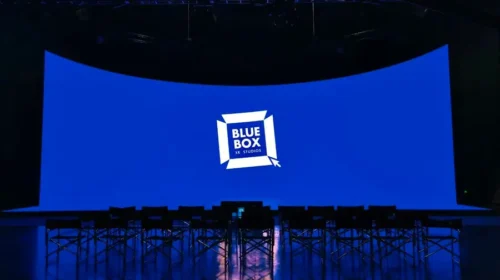Mininglamp IPO advances with key regulatory approval

China’s securities regulator has registered the leading marketing software maker’s Hong Kong listing, which could raise more than $100 million
Key Takeaways:
- Mininglamp’s Hong Kong IPO has been approved by China’s securities regulator, paving the way for a listing that could raise more than $100 million
- The marketing software maker, whose backers include Tencent, WPP and Temasek, has been aggressively cutting costs as it edges closer to profitability
By Doug Young
The most impressive thing about the IPO application from Mininglamp Technology is the company’s A-list of investors. Almost as impressive is the steady improvement of the company’s finances, as it made an important regulatory advance towards a Hong Kong listing last Friday with the registration of its application by the Chinese securities regulator.
The one potentially troublesome thing about Mininglamp, whose services help companies improve their marketing abilities by better understanding their customers, is a revenue contraction last year. It’s also cutting costs quite aggressively, which reflects good discipline but could also undermine its future leadership if it cuts too much. In particular, the company has slashed its R&D spending by more than half over the last three years, which could be overly aggressive in such a fast-moving sector, especially with the potential for rapid advances using AI.
Mininglamp made its latest filing for a Hong Kong IPO back in June, after an earlier application lapsed. The new application can now proceed following the official registration of Mininglamp’s listing plan by the China Securities Regulatory Commission (CSRC), according to an announcement published on the CSRC’s website last week. Mininglamp plans to issue 8.3 million ordinary shares in the listing, according to the announcement.
The company was valued at $1.67 billion after a funding round in January 2024, which was down sharply from the $3 billion it was worth at its peak after a funding in November 2020. The listing is being underwritten by leading domestic investment bank CICC. The latest valuation, combined with CICC’s role, suggest the listing could raise a relatively sizable amount of $100 million or more.
All that said, we’ll take a closer look at the nuts-and-bolts of this company that generally look quite positive, despite the few trouble signs we’ve pointed out. In years of following China tech, we’ve seldom seen a company with quite as many big-name backers as Mininglamp. That list is anchored by internet giant Tencent, which holds about 30% of Mininglamp’s shares.
The Tencent pedigree was probably a key element that helped Mininglamp attract the extensive list of other big names, which includes HongShan, formerly known as Sequoia China, as well as Singaporean sovereign wealth fund Temasek and global venture capital giant Kleiner Perkins Caufield & Byers. Other investors include two media industry giants, Britain’s WPP and China’s own Kuaishou, a leading short-video site. All of those investors hold anywhere from 1.8% of Mininglamp’s shares, to as much as 7.5% for HongShan.
The company’s core product is its Miaozhen Systems, which accounted for 90% of its revenue last year and “integrates media spending optimization, social media management, and customer growth software,” according to its listing document. The company basically offers tools to help its corporate customers, including consumer goods makers, retailers and restaurants, better understand consumer behavior and improve their marketing materials that are mostly offered over online media platforms.
As an example, it says a customer could use its analytic services to discover that consumers of its products in Northern China prefer watching videos with snowy backgrounds during the winter months, and that they enjoy violin music in the background. “Products that can deduce the causal relationship between text, images and videos in advertising materials and their impacts, (can help) enterprises identify the advertising contents that are likely to generate the best marketing performance,” it said.
Revenue decline
Next, we’ll take a look at the company’s financials, which show its revenue hit a hiccup last year, but that its profitability metrics are steadily improving, even though it’s still losing money.
The company’s revenue rose 15% year-on-year in 2023 to 1.46 billion yuan ($205 million), but then dropped 5.5% last year to 1.38 billion yuan. No financial data was given for 2025, but we suspect the declines probably continued in the first half of this year. Two of the company’s three main segments, operational intelligence and marketing intelligence, both fell last year, accounting for more than 90% of total revenue. Only its industry solutions grew, increasing by 11.3%. But that segment only accounted for 9% of its revenue.
By comparison, China’s data intelligence application software market, where Mininglamp is the leader, is expected to grow 18.7% annually between 2023 and 2028 to reach 71.3 billion yuan in annual sales by the end of that period, according to third-party data in the listing document. Thus, Mininglamp’s growth was already trailing the industry average in 2023, and it lost significant market share last year as its revenue contracted – not exactly the most promising signs for a company that calls itself the market leader.
But the primary reason behind the decline seems legitimate, namely, the company’s attempts to move away from lower-margin customized products to more profitable standardized ones. As it made that shift, its gross margin improved to 51.6% last year from 50.1% in 2023, though both figures were down from its 53.2% gross margin in 2022.
Mininglamp has also been slashing costs over the last three years, resulting in big improvements in its operational efficiency. As we previously noted, it cut its R&D spending by more than half from 751 million yuan in 2022 to 353 million yuan last year. Its administrative spending dropped by a similar 38% over that period, while its sales and marketing spending dropped by 55%.
All that reduced spending helped the company record its first adjusted operating profit last year of a modest 580,000 yuan, compared with a 118 million yuan loss on that basis in 2023. Its adjusted net loss, which excludes fair value changes in financial instruments and stock-based employee compensation, also narrowed sharply to 45 million yuan last year from 174 million in 2023.
The company’s cash flow is also steadily improving, and it said it expects that trend to “significantly improve” this year. Its net cash is also growing, and its gearing ratio dropped sharply to just 13.8% last year from 47.9% at the end of 2023.
All those encouraging trends mean this listing is likely to attract relatively strong investor interest when it finally makes it to market. Its strong backer list is a major sign of confidence, and its cost discipline and improvement in profitability metrics are positives as well. It’s also likely to be a major beneficiary from rapid advances in AI, though it needs to be careful to maintain its R&D spending to avoid getting overtaken by more aggressive rivals.
To subscribe to Bamboo Works weekly free newsletter, click here






